Gall Fly: Maggots feeds on floral buds. Infested plant do not developes capsules.
At initial stage, take spray of Neem formulation@3gm/10Ltr of water. In case of severe infestation, take spray of Carbaryl 50 WP@900gm/acre in 200 litre of water or Dimethoate@20ml/10Ltr of water.
Agriculture
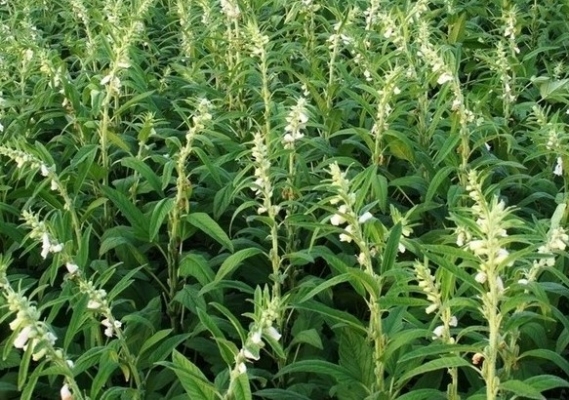
General Information
India is the largest producer of sesame in the world. Sesame is known as Till in Hindi. It is a short duration crop can be grown throughout the year. Its seeds are used to extract edible oil. Seeds are available in two colors, black and white. Sesame is a major oilseed crop in Himachal Pradesh. It is a rainfed crop which is grown in dry, sloppy and less fertile areas. It gives an average yield of 2.5quintal/acre.
Climate
-
Temperature
27-33°C -
Rainfall
400-600mm
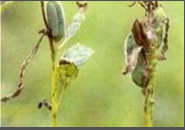
Leaf Webber or Capsule Borer: Young larvae roll into few leaves and feed on them. Plants do not produce branch or shoot. At flowering stage borer feeds on capsules and seed thus affect yield.
At initial stage, take spray of Neem formulation@3gm/10Ltr of water. In case of severe infestation, take spray of Carbaryl 50 WP@900gm/acre in 200 litre of water or Dimethoate@20ml/10Ltr of water.
-
Temperature
27-33°C -
Rainfall
400-600mm
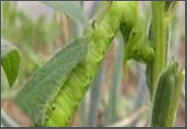
Hawk or Dead head moth: Caterpillar attacks on leaves and feed on them. Affected plant do not produce any branches.
If incidence is observed, collect caterpillar and destroyed them away from field. If infestation is observed, to control, do dusting of Carbaryl@8kg/acre.
Soil
The ideal soil for sesame cultivation is well drained light to medium texture soil with good water holding capacity. PH of soil should be 5 to 8. Do not cultivate crop in alkaline and acidic soils.
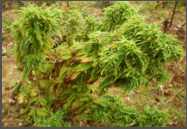
- Disease and their control:
Phyllody: Plants do not produce flower, its flower part turn into leaf like structure.
Remove infestated plant and destroyed them away from field. Do soil application of Phorate@4kg/acre or spray crop with Dimethoate@20ml/10Ltr of water.
Popular Varieties With Their Yield
Brajeshwari (LTK-4): It is a high yielding variety which is suitable for growing in all regions. It is medium long variety which has more branches. The seeds contain 48-49% of oil content. It gives an average yield of 2.5-3.5 quintal/acre.
Punjab Sesame No. 1: It is a spreading variety which contains large and white color seeds. The seeds contain 52% of oil content. It gives an average yield of 2 quintal/acre.
Other States varieties:
Pratap (C 50): Tall variety, ready to harvest in 100-105 days. Seeds are white color with oil content 50%. Gives average yield of 2 quintal/acre.
RT 46: Variety having white seeds with 50% oil content. Gives average yield of 2.8 quintal/acre.
T 13: Suitable for light soils of Rajasthan. Gives average yield of 2.4 quintal/acre.
TC 25: Suitable for light soils of Rajasthan. Ready to harvest in 80-85 days. Seeds are white with oil percentage of 48.4%. Gives average yield of 2 quintal/acre.
JTS 8
Pragati
RT 103, RT 125, RT 54, RT 46
RT 127, RT 346, RT 351
Hybrids
SVPR-1, TMV 4, TMV 5, TMV 3, CO-1, TMV 6, VRI (SV)-1, VRI (SV)-2
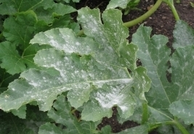
Powdery mildew: White powdery growth is observed on young leaves. In severe condition premature defoliation and fruit drop is observed.
If infestation is observed in field, take spray of Wettable Sulphur@25gm/10Ltr of water or Dinocap@5ml/10Ltr of water. If necessary take second spray with interval of 10days.
Land Preparation
Plough land once with help of desi /country plough followed by 1-2 cross harrowing. Leveled the soil to avoid water logging condition in the field.
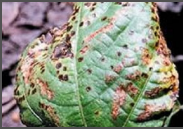
Cercospora leaf spot: Small brown spots are observed on the leaves. In case of severe infestation, defoliation occur.
If infestation of disease is observed in field, take spray of Mancozeb@2gm/Ltr or Captan@2gm/Ltr or Carbendazime@2gm per Ltr of water.
Sowing
Time of sowing
Optimum time for sesame cultivation is in starting of monsoon season. It is sown in last week of June –July. But July month is best for sowing. By late sowing, it will help to protect crop from Phyllody disease.
Spacing
Keep spacing of 30cm between row to row and 15 cm between plant to plant. For Punjab Sesame No. 1, use row spacing of 15-20cm.
Sowing Depth
Avoid deep sowing of sesame seeds. Sow seeds at depth of 3-4 cm.
Method of sowing
For sowing of sesame, pora or drill method is adopted.
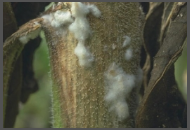
Root rot: Infested roots become dark brown in colour and plant die in case of severe infestation.
Avoid monocropping and follow crop rotation. Before sowing do seed treatment with Carbendazim@2.5gram per kg of seed. Drench the soil with Carbendazim solution@2gm/Ltr of water.
Harvesting
Crop is ready for harvesting, when leaves and capsule changes its color to yellow and leaves start to defoliate. Do not delay harvesting to avoid shattering of capsule.
Seed
Seed Rate
Use seed rate of 2 kg/acre.
Seed Treatment
Seed treatment with Carbendazim@2gram/liter or Thiram@4gram/liter of water will protect seeds from attack of soil borne fungus. After chemical treatment, treat seeds with Trichoderma viride or Trichoderma@4gram/kg seeds.
Post-Harvest
After harvesting, crop is tied into bundles and stacked on threshing floor for several days for proper drying. Seeds are seperated from crops by gentle beating with sticks. After cleaning, seeds are dry in sun for three days. After then stored seeds in gunny bags.
Fertilizer
Nutrient Requirement (kg/acre)
| NITROGEN | PHOSPHORUS | POTASH |
| 24 | 16 | 8 |
Fertilizer Requirement (kg/acre)
| UREA | SSP | MOP |
| 50 | 100 | 13 |
At time of field preparation, apply well decomposed cowdung@12.5 ton/acre. Broadcast or drill all nitrogen, phosphorus, and potash at time of sowing.
Irrigation
As it is grown in kharif season, less irrigation is required. Provide protective irrigation depending upon rainfall intensity and rainfall frequency. Avoid water stress at flower initiation and capsule formation.
Weed Control
To keep field weed free, take first weeding 20-25 days after sowing. Second weeding is done after 40-45 days of sowing. To control weed chemically, apply pre-emergence herbicides like Fluchloralin @ 800 ml /acre or Alachlor @ 600 ml per 100liter of water per acre.
Plant protection
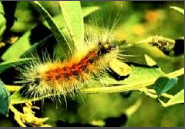
- Pest and their control:
Bihari Hairy Caterpillar: Feed on leaves as well as on all part leaving only stem.
If infestation is observed, to control take spray of Dimethoate@20ml/10Ltr of water.








